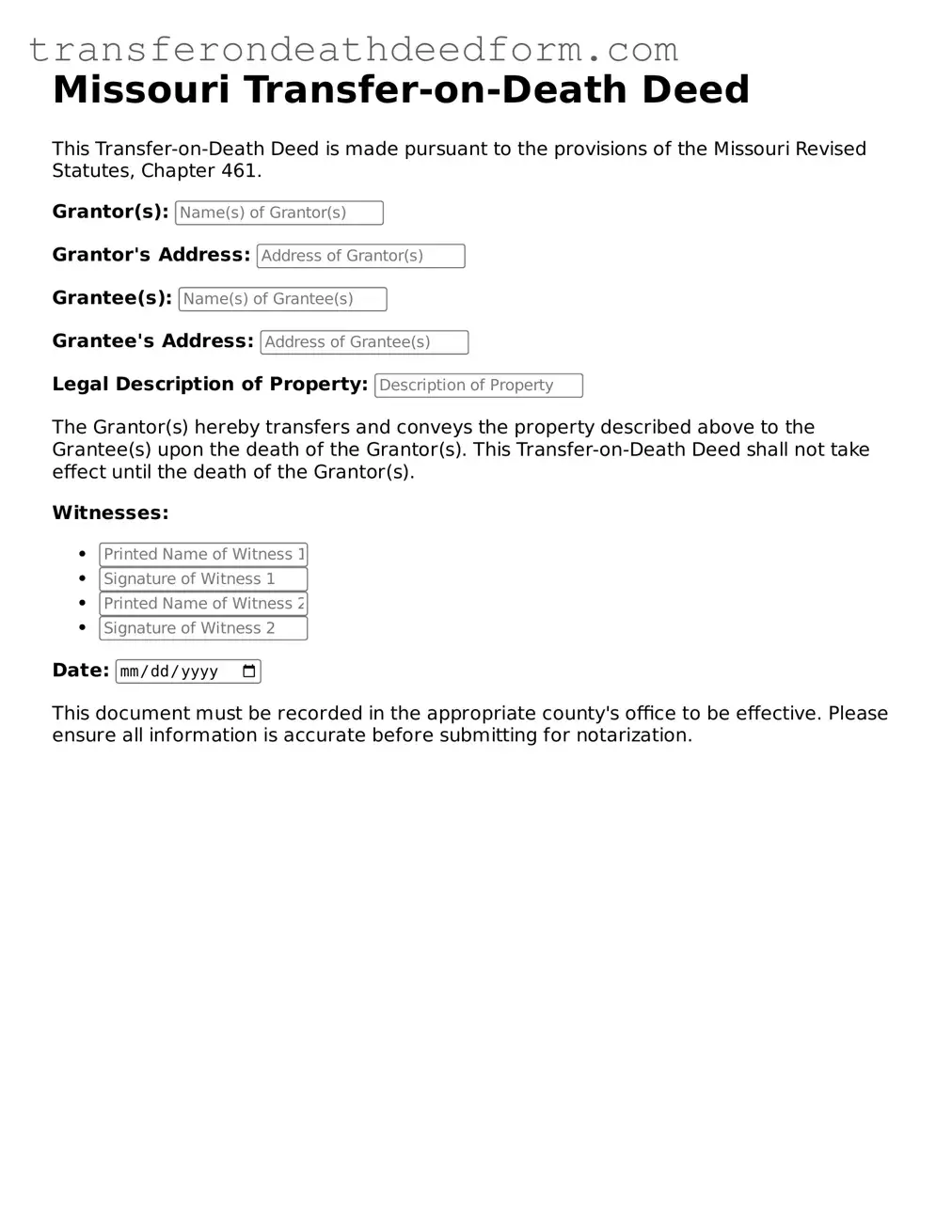Transfer-on-Death Deed Form for Missouri
The Missouri Transfer-on-Death Deed form allows property owners to transfer their real estate to beneficiaries upon their death, avoiding the often lengthy probate process. This legal tool provides peace of mind, ensuring that loved ones receive property directly and efficiently. Understanding how to utilize this form can simplify estate planning and help secure your family's future.
Get My Document
